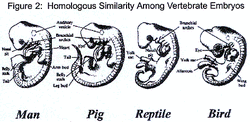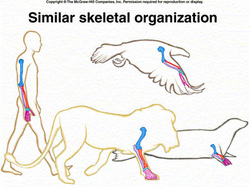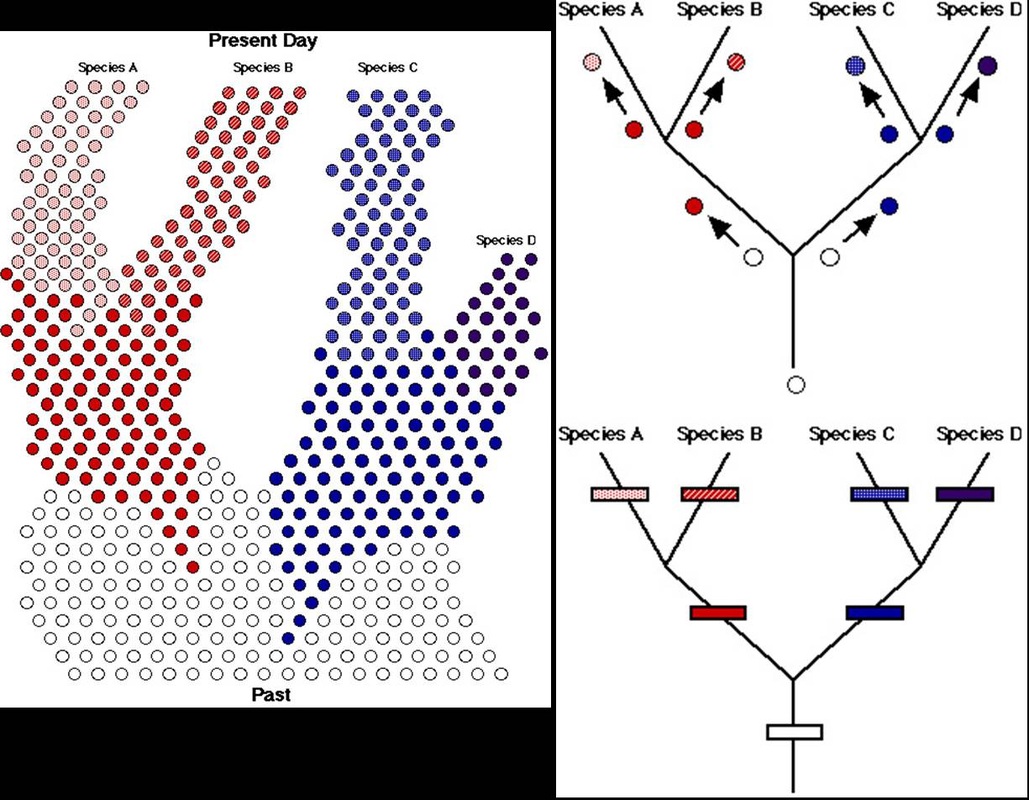All organisms share common ancestors
- Species are populations of interbreeding organisms. Species differ from geographic regions, from ancestors that lived in the recent past, and in form and behavior.
- Populations divide over time, evolving to fit new environments. Fossil evidence supports this claim.
- Shared ancestry explains common traits between species, such as embryonic development, anatomy, and biochemical processes.

- Similarities in Embryonic Development

- Similarities in Anatomical Structures
However, not all homologous structures are similar in function. Some structures that are present in organisms are no longer used for their original purposes. Such structures are known as vestigial structures, and are strong evidence of descent from common ancestry.
- Similarities in Biochemical Processes

